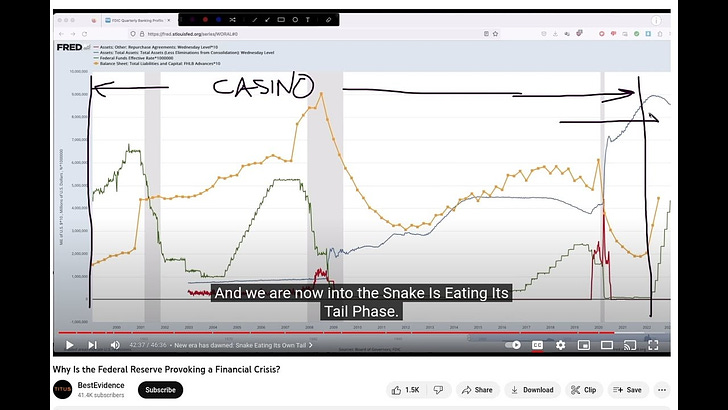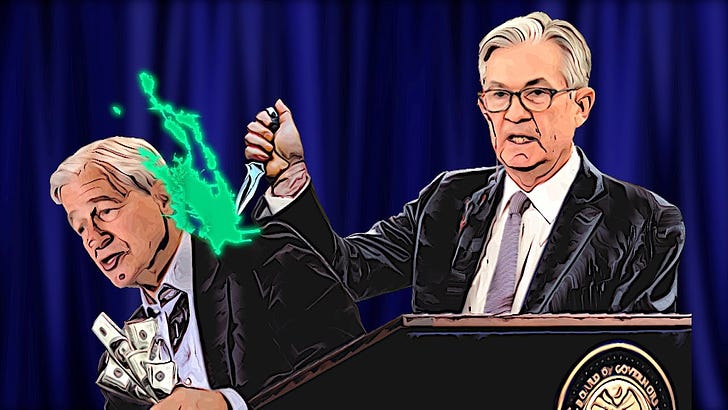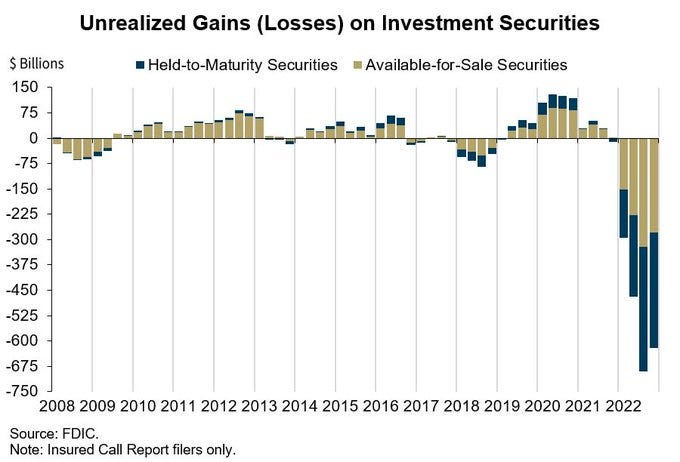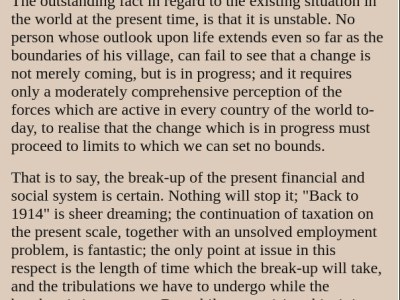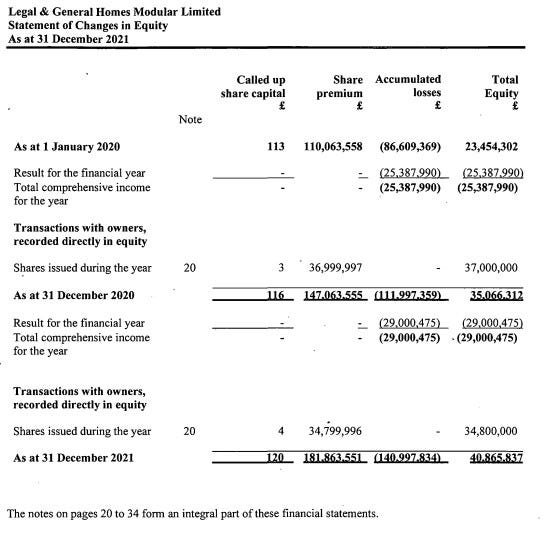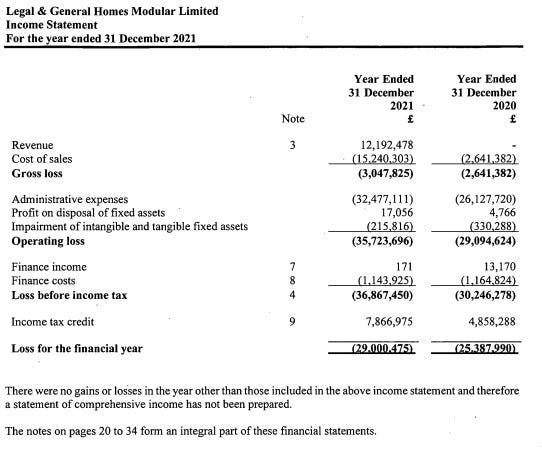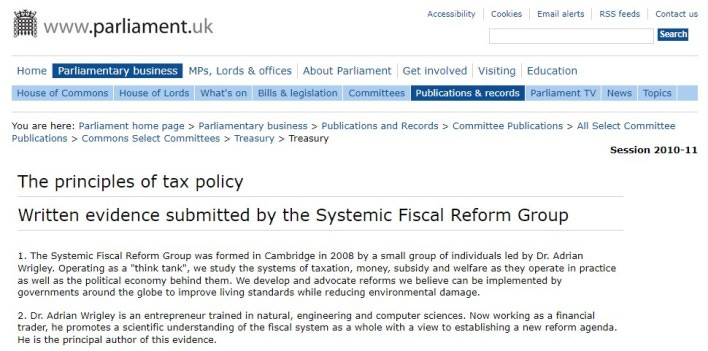At the snake eating its own Tail Phase. #PEAKEVERYTHING #CarbonCurrencyEndgame #ConquestofDough #FinancialEyes #Aadhaar @financialeyes @PerKurowski @SwiftysDucks @fiatisdying1 @AKkiff262 @wesfree @sci
MARCH 13, 2023
Title: The Current State of Economic Affairs: A Critical Analysis As of March 13 2023.
Preparation for a post on Monday analysing the current Stage of the Going Direct plan to Move to a Public-Private partnership command and control economy, and how The Free Market can fight back
In the wake of recent economic developments, it is imperative to delve into the intricate details of the financial landscape and its underlying implications. The interplay of various economic indicators, policy decisions, and global market dynamics has brought to the forefront a myriad of complex issues that warrant careful consideration and critical analysis.
One of the central themes that has emerged is the concept of financial instability and its potential ramifications. The recent identification of a precursor to a repo spike in the American commercial banking sector has raised concerns about the solvency of banks and the impact of bond holdings on their balance sheets. This revelation has sparked discussions about the implications of lower yields on securities and the inverse multiplier effect on asset valuations.
The role of central banks in shaping economic policies and the unintended consequences of interest rate adjustments have also come under scrutiny. The use of interest rate hikes as a policy tool has raised questions about its side effects and the broader impact on the economy. The potential for a financial crisis, coupled with the proposed solutions such as central bank digital currencies and carbon rationing systems, has added layers of complexity to the current economic discourse.
Furthermore, the geopolitical landscape and its influence on economic decision-making have been subjects of intense debate. The role of superstates and their interactions in a globalized economy, as envisioned by scholars such as James Burnham, has resurfaced as a topic of interest. The implications of such geopolitical dynamics on trade, resource allocation, and global power structures are areas that demand further exploration.
In addition to these macroeconomic considerations, the role of technology and algorithms in shaping daily lives and economic outcomes cannot be overlooked. The pervasive influence of digital platforms, search engines, and social media algorithms on information dissemination and public discourse has raised concerns about the impact of such technological interventions on economic decision-making and policy formulation.
Amidst these multifaceted economic challenges, it becomes imperative to reevaluate traditional binary paradigms such as left-right political divides and explore alternative frameworks for understanding and addressing economic complexities. The need for a pragmatic approach that transcends ideological boundaries and embraces nuanced perspectives is crucial in navigating the intricate web of economic issues facing contemporary societies.
Moreover, historical precedents and influential figures in economic thought, such as Henry George and his advocacy for distributism, offer valuable insights into alternative economic models and policy frameworks. The relevance of their ideas in the current context and their potential to inform contemporary economic discourse cannot be understated.
As we navigate through these complex economic landscapes, it is essential to foster an environment that encourages critical thinking, open dialogue, and interdisciplinary collaboration. The convergence of economic theory, historical insights, technological advancements, and geopolitical realities presents an opportunity for holistic analysis and informed decision-making.
In conclusion, the current state of economic affairs demands a comprehensive and nuanced approach that transcends traditional paradigms and embraces diverse perspectives. By critically examining the interplay of economic indicators, policy decisions, technological advancements, and historical precedents, we can strive towards a more holistic understanding of contemporary economic challenges and pave the way for informed and effective solutions.
This article serves as a call to action for scholars, policymakers, and thought leaders to engage in constructive dialogue and rigorous analysis to address the multifaceted economic challenges facing our interconnected world. Only through collaborative efforts and interdisciplinary engagement can we hope to navigate through these complexities and chart a path towards sustainable and inclusive economic prosperity.
TITS and ARSE , Has the Bottom revealed itself.
This week saw a raft of data from the usual sources often ignored in the House price discourse of the “Twattering Classes”. The headline image is a fully revealed Swedish Bottom, Sweden has been leading the way with its #Blackrock consulted #Goingdirect
Rates Were Raised to far to Fast
The rapid increase in interest rates followed by a prolonged high rate environment has raised concerns and prompted questions about the underlying reasons. The narrative surrounding the second phase of Blackrock's Going Direct initiative, the abrupt switch in leadership, and the subsequent reactions have fueled skepticism and speculation. The potential …
Feb 23, 2023, 11:39 AM (9 days ago)
How to destroy the web of Debt
·This is the key to our predicament the debt pyramid ponzi scheme. Last in line pays, This illusion , blind faith in the nature of debt and usury enslaves us all, “Serfs Up” Domar? Any takers? Evsey Domar’s classic 1970 paper “The causes of slavery or serfdom: a hypothesis
Feb 2023, Note from Roger G Lewis to Home@ix business partners.
Hi xxxxx
( Black Rock and Blackstone both have property funds in trouble at the moment, if they are in trouble the rest of us have no chance.)
All Agents will be facing tough times this year Market activity in Commercial is as badly impacted as in Residential. The figures I flagged at the very beginning of January analyzing the raw data between Boxing Day and New Year are only now being reported in the press, already towards the end of December there had been quite a lot of discreet layoffs in the large surveying firms, Its that rapid deterioration in the wider market that derailed the XXX deal.
IDEAS DISCUSSION ON THE MARKET TURMOIL: MARCH 13, 2023
1. The current economic situation is causing concern due to the identification of a precursor to another repo spike in the banking sector.
2. The Federal Reserve's release of economic indicators has revealed that American commercial banks are facing insolvency due to losses from bond holdings.
3. The inverse relationship between security yield and price is a key factor contributing to the insolvency of commercial banks.
4. The side effects of raising interest rates as a policy tool are not limited to cooling off the housing market or reducing inflation but also have wider implications on bank balance sheets.
5. Questions have been raised about the Federal Reserve's policy decisions, with some suggesting that the central bank may be sabotaging the economy.
6. The crisis in the financial sector may lead to the implementation of central bank digital currencies and carbon rationing systems as potential solutions.
7. The impact of rising interest rates on the markets and the potential for a financial meltdown are being closely monitored.
8. The upcoming budget announcement and the Bank of England's interest rate decision are expected to have significant implications for the economic landscape.
9. It's important to consider the influence of Google algorithms on information dissemination and the need to seek alternative sources of knowledge.
10. The discussion of historical figures such as George Orwell, James Burnham, and Henry George sheds light on past economic and political ideologies that continue to influence contemporary discourse.
11. An exploration of anarchism and its original proponents, such as Bakunin and Proudhon, can provide valuable insights into alternative political and social theories.
12. The intersection of economic, political, and social theories from different historical periods offers a rich tapestry of ideas that can inform contemporary discussions and decision-making.
13. It's essential to critically analyze the motivations and potential biases of influential figures in public discourse, such as journalists, authors, and political commentators.
14. Engaging with diverse perspectives and historical contexts can enrich our understanding of complex issues and contribute to more informed decision-making in the present day.
I. Introduction
A. Weekend Recap
1. Limited Cinema Time
2. Reconnecting with Friends
B. Recent Research on Silicon Valley Bank
1. Identifying Precursor to Repo Spike
2. Analysis of Economic Indicators
II. Analysis of Economic Indicators
A. Impact of Interest Rates
1. Relationship between Yield and Security Value
2. Effect on Bank Balance Sheets
B. Side Effects of Interest Rate Policies
1. Housing Market and Economic Demand
2. Unintended Consequences
III. Questioning the Federal Reserve's Actions
A. John Titus's Inquiry
1. Sabotaging the Economy
2. Implications of Central Bank Policies
B. William Engdahl's Concerns
1. Impact of Energy Policies
2. Crisis and Policy Implications
IV. Oven-Ready Policies
A. Financial Crisis Provocation
1. Central Bank Digital Currencies
2. Carbon Rationing System
B. Implications of Financialized State
1. Corporate Takeovers
2. Iconoclastic Score Settling
V. Financial Market Analysis
A. Recent Developments
1. HSBC's Acquisition of Silicon Valley Bank UK Business
2. Implications for the Market Stability
B. Upcoming Events
1. Budget Announcement and Bank of England's Interest Rate Decision
2. Anticipated Data on Mortgage Lending and Housing Market Volumes
VI. Influence of Algorithms in Media
A. Impact of Google Algorithms
1. Dominance in Internet Searches
2. Influence on Alternative Media Platforms
B. Seeking Independent Information
1. Importance of Reading Books and Visiting Libraries
2. Limitations of Social Media Discussions
VII. Historical References and Philosophical Insights
A. Insights from George Orwell's Works
1. Critique of Democratic States and Dependencies
2. Relevance to Current Geopolitical Dynamics
B. Influence of James Burnham and Henry George
1. Neo-conservative Ideologies and Social Reforms
2. Impact on Political and Economic Thought
VIII. Reflection on Political Ideologies and Personal Growth
A. Critique of Binary Left-Right Thinking
1. Pragmatic Approach to Political Discourse
2. Influence of Stoicism and Personal Philosophy
B. Exploration of Anarchism and Original Texts
1. Access to Original French Texts by Bakunin and Proudhon
2. Importance of Learning from Original Sources
IX. Conclusion and Next Steps
A. Summary of Key Insights
1. Analysis of Recent Economic Indicators
2. Reflection on Historical References and Philosophical Insights
B. Future Learning and Research Goals
1. Further Exploration of Anarchism and Political Philosophy
2. Continued Analysis of Financial Markets and Geopolitical Dynamics
At the snake eating its own Tail Phase. #PEAKEVERYTHING #CarbonCurrencyEndgame #ConquestofDough #FinancialEyes #Aadhaar @financialeyes @PerKurowski @SwiftysDucks @fiatisdying1 @AKkiff262 @wesfree @scientificecon
ROGERGLEWIS MARCH 13, 2023 2 COMMENTS
At the snake eating its own Tail Phase. #PEAKEVERYTHING #CarbonCurrencyEndgame #ConquestofDough #FinancialEyes #Aadhaar @financialeyes @PerKurowski @SwiftysDucks @fiatisdying1 @AKkiff262 @wesfree @scientificecon
source: tradingeconomics.com
Pending…
WATCH: Building Community – #SolutionsWatch
Walden 2, Prevention or Intervention. From Nowhere and Utopia. What’s the point? The Objective, The Purpose!MARCH 15, 2022
But there was, I think, a better reason why more and more people began to read the book. The world was beginning to face problems of an entirely new order of magnitude-the exhaustion of resources, the pollution of the environment, overpopulation, and the possibility of a nuclear holocaust, to mention only four. Physical and biological technologies could, of course, help. We could find new sources of energy and make better use of those we had. The world could feed itself by growing more nutritious grains and eating grain rather than meat. More reliable methods of contraception could keep the population within bounds. Impregnable defenses could make a nuclear war impossible. But that would happen only if human behavior changed, and how it could be changed was still an unanswered question. How were people to be induced to use new forms of energy, to eat grain rather than meat, and to limit the size of their families; and how were atomic stockpiles to be kept out of the hands of desperate leaders? From time to time policy makers in high places have been urged to pay more attention to the behavioral sciences. The National Research Council, the operative arm of the National Academy of Sciences, made one such proposal a number of years ago, pointing out that useful “insights in policy formulation” had been developed. But it implied that the chief role of the behavioral sciences was to collect facts and insisted, possibly to reassure policy makers who might be alarmed by the ambitions of scientists, that “knowledge is no substitute for wisdom or common sense in making decisions.” Science would get the facts but Congress or the President would make the decisions-with wisdom and common sense. vii It is true that when the behavioral sciences have gone beyond the collection of facts to recommend courses of action and have done so by predicting consequences, they have not been too helpful. Not all economists agree, for example, on how an increase or reduction in taxes or a change in interest rates will affect business, prices, or unemployment, and political scientists are no more likely to agree on the consequences of domestic or international policies. In anthropology, sociology, and psychology the preferred formulations are those that do not dictate action. A thoroughgoing developmentalism, for example, almost denies the possibility of effective action. Applied psychology is usually a mixture of science and common sense, and Freud regarded therapy as a minor contribution of psychoanalysis.
B. F. SKINNER January, 1976
Chapter 3 (Sheep)
. We set out across the field to the south, skirting a fairly large flock of sheep. The sheep were kept together by a single length of string, carrying occasional bits of cloth like a kite-tail, and supported on poles stuck into the ground to form a square fold. Rogers commented on this insubstantial arrangement. ‘We wanted an expanse of cropped grass in our front yard,” Frazier explained, “but it’s too close to the buildings for a regular sheep pasture. It’s used a great deal by the children. In fact, we all use it as a sort of lawn. By the way9′-he turned particularly to Castle and me-“do you remember Veblen’s analysis of the lawn in the Theory of the Leisure Class?” “I do, indeed,” said Castle. “It was supposed to represent a bit of choice but conspicuously unconsumed pasture.” Castle’s diction was always precise, but occasionally, as in this instance, he burlesqued himself with added delicacy. “That’s right,” said Frazier, with a slight smile. “Well, this is our lawn. But we consume it. Indirectly, of course -through our sheep. And the advantage is that it doesn’t consume us. Have you ever pushed a lawn mower? The stupidest machine ever invented-for one of the stupidest of purposes. But I digress. We solved our problem with a portable electric fence which could be used to move our flock of sheep about the lawn like a gigantic modng machine, but leaving most of it free at any time. At night the sheep are taken across the brook to the main fold. But we soon found that the sheep kept to the enclosure and quite clear of the fence, which didn’t need to be electrified. So we substituted a piece of string, which is easier to move around.” “What about the new lambs?” Barbara asked, turning her head at a slight angle and looking at Frazier from the comers of her eyes. “They stray,” Frazier conceded, “but they cause no trouble and soon learn to keep with the flock. The curious thing is-you will be interested in this, Burris-the curious thing is that most of these sheep have never been shocked by the fence. Most of them were born after we took the wire away. It has become a tradition among our sheep never to approach string. The lambs acquire it from their elders, whose judgment they never question!’ “It’s fortunate that sheep don’t talk,” said Castle. “One of them would be sure to ask ‘Why?’ The Philosophical Lambkin.” “And some day a Skeptical Lambkin would put his nose on the string and nothing would happen and the whole sheepfold would be shaken to its very foundations,” I added. “And after him, the stampede!” said Casde. “I should have told you,” said Frazier soberly, “that no small part of the force of tradition is due to the quiet creature you see yonder.” He pointed to a beautiful sheep dog, which was watching us from a respectful distance. “We call him the Bishop.”
This interchange between Kunstler and Berman on where did peak oil go from 2018 was interesting to contrast with Kunstler’s recent appearance on Geo-Politics and empire where he also professes an enduring dislike personally for Noam Chomsky. This, then contrasted with both appearing in the Nation magazines video series on Peak oil and then finally with the journey of Mike Ruppert from 9-11 truth to peak oil propagandist, which ties in also with Peak prosperity and Chris Martenson. Cognitive dissonance is a much better first explanation for contradictions in all expressed opinions in this day and age as quoted above from Jonathan Nitzan and Shimshon Bichler. The Scientist and the Church. , which commentator or blogger is not confronted with sure bet betting slips that “now hang on the thread of cognitive dissonance”.
Always of course begging the question were they gambling with their own skin in the game. ( Hugh Hendry anyone.)
JANUARY 2, 2023
JANUARY 31, 2023
— RIFT (@RIFT_589) March 12, 2023
@CunneenKeith @scientificecon @financialeyes @wesfree @PerKurowski @Carlier_J87
Hi Dork. Hi Richard, Wes and Ranjan , what do you make of this? Also Wes Per and Paul same thing? #GFC2 https://t.co/AiJwesePFGPost
See new posts
Conversation
I'm puzzling to understand how THIS isn't the only thing people are talking about today????????? Someone tell me about the rabbits. and fast!
·
549.3K
Views
190
Bookmarks
52,242 views 15 Feb 2023
Timestamps 00:00 - Intro 01:23 - Global risk posed by U.S. banking system 02:30 - Repo crisis preceded PANDEMIC!!! 03:32 - WEF’s tote board of risk narratives 04:05 - F.D.I.C. Quarterly Banking Profile (3Q2022): real risk of banking crisis 05:26 - Chart 7 of Quarterly Banking Profile - massive balance sheet losses 08:41 - Why debt-based securities dropped in value by $690 billion 11:40 - Composite balance sheet (entire industry) in Quarterly Banking Profile 14:33 - Why assets on banks’ balance sheet are vastly over-valued 17:12 - That entire banking industry is dead broke, evident from composite liabilities 20:10 - Banks’ counter-measures to their insolvency 21:32 - FHLB advances: panic borrowing 24:57 - Repo market: more panic borrowing 26:54 - FRED’s tale of three crises 35:23 - Role of FHLB advances in last three crises 39:52 - Panic borrowing now - Fed fanning flames of new crisis 41:25 - New era has dawned: Snake Eating Its Own Tail This video builds on and extends the explosive (but largely overlooked AFAIK) analysis done by Chris Whalen, “Is JPMorgan Chase Insolvent?” While Whalen is imo the best independent bank analyst in the business, he doesn’t have a crystal ball. (At least I couldn’t find one when I ransacked his home many moons ago.) He put out that post, which is nominally about Dimon’s bank but covers the entire banking industry, on Monday, November 28, 2022. He thus didn’t have access to the F.D.I.C.’s Quarterly Banking Profile for the 3rd quarter of 2022, which came out three days later. Whalen’s analysis focused on the dubious valuations of bank assets, which is certainly germane as far as they go and are discussed in greater detail in this video. The real action in the third quarter QBP, though, is on the liability side of the industry’s balance sheet. There we find evidence that aside from being broke, the banks know they’re broke and are panicking about it. But here’s the real kicker: the Fed isn’t helping the banks this go-round. It’s a new ballgame, and it goes by the name ALL. BAD. You can find more detailed written treatments of this video and others I’ve done at my substack:
* * * * * Links Chris Whalen’s November 2022 (in)solvency assessment of banking industry:
https://www.theinstitutionalriskanaly...
World Economic Forum’s 98-page global risk assessment (2023 edition): https://www3.weforum.org/docs/WEF_Glo... F.D.I.C. Quarterly Banking Profile: https://www.fdic.gov/analysis/quarter... Basel III regulations - Definition of capital excludes goodwill: https://www.bis.org/basel_framework/c... New York Fed’s take on Federal Home Loan Board (FHLB) during GFC: https://www.newyorkfed.org/medialibra... Uncle FREDdie:
https://fred.stlouisfed.org/
Mish Shedlock’s post on exploding interest payments on U.S. debt (Feb. 5, 2023): https://mishtalk.com/economics/the-an...
— Real-Estate Land Development Limited (@RealEstateLand3) March 2, 2023
I sort of gave up on FOFOA stuff years ago.
I imagine he still thinks the Jews in the Genoa conference 100~ years ago are still waiting for the coming perfection….
Waiting for Godot more like.
What matters is national accounts .
Do prices match income (The GAP closed)— The Dork of Cork (@CunneenKeith) March 12, 2023
Hi Kieth ( Dork?) ,
I have been watching the Gap series. https://t.co/0ZRIjD9uPN
I think Wes’s Unit of Account point is part of the Honest Money System which is envisaged by Social Credit.— Real-Estate Land Development Limited (@RealEstateLand3) March 13, 2023
— Real-Estate Land Development Limited (@RealEstateLand3) March 13, 2023
— Real-Estate Land Development Limited (@RealEstateLand3) March 13, 2023
— Real-Estate Land Development Limited (@RealEstateLand3) March 13, 2023
— Real-Estate Land Development Limited (@RealEstateLand3) March 13, 2023
We then get to the Carbon Currency End Game question. which starts with The Manichean CO2
narratives. and their promoters. https://t.co/gLWnskiywK— Real-Estate Land Development Limited (@RealEstateLand3) March 13, 2023
— Real-Estate Land Development Limited (@RealEstateLand3) March 13, 2023
https://t.co/4lORvRthA1 Markham interviews Kingsmill Bond , ” Names Bong Kingsmill Bond” license to trot out peak oil inanities.
— Real-Estate Land Development Limited (@RealEstateLand3) March 13, 2023
— Real-Estate Land Development Limited (@RealEstateLand3) March 13, 2023
https://t.co/0yzpGFIXs5 pic.twitter.com/91b8cBjxTN
— Real-Estate Land Development Limited (@RealEstateLand3) March 13, 2023
— Real-Estate Land Development Limited (@RealEstateLand3) March 13, 2023
— Real-Estate Land Development Limited (@RealEstateLand3) March 13, 2023
https://wikispooks.com/wiki/Chris_Martenson
— Real-Estate Land Development Limited (@RealEstateLand3) March 13, 2023
— Real-Estate Land Development Limited (@RealEstateLand3) March 13, 2023
Silicon Valley Bank: Money in failed US bank is safe – US government
Published
4 hours ago
Share
https://www.bbc.com/news/world-us-canada-64935170
https://thebankoflondon.com/our-story
Silicon Valley Bank: Offer made for UK arm of failed US lender
Published
6 hours ago
Share
A consortium of investors led by The Bank of London, a UK clearing bank, has submitted a formal bid to the Treasury.
Gulnara Karimova: How Uzbek president’s daughter built a £200m property empire
Published
6 hours ago
Share
Gulnara Karimova and some of her portfolio in London
By Andy Verity
BBC economics correspondent
A dictator’s daughter who moonlighted as a pop star and diplomat spent $240m (£200m) on properties from London to Hong Kong, a report has found.
Oʻzbekiston Respublikasi / Ўзбекистон Республикаси (Uzbek)
Anthem: Oʻzbekiston Respublikasining Davlat Madhiyasi / Ўзбекистон Республикасининг Давлат Мадҳияси
“State Anthem of the Republic of Uzbekistan”
2:27
Location of Uzbekistan (green)
— Real-Estate Land Development Limited (@RealEstateLand3) March 13, 2023
https://notthegrubstreetjournal.com/?s=16%3A1
Nafeez Ahmed Investigative journalist, recovering academic, tracking the Crisis of Civilization patreon.com/nafeez Aug 21 Inside … Continue readingInside the new economic science of capitalism’s slow-burn energy collapse. Some meat for The Bare Bones diagnosis from Dr Nafeez Ahmed.
Renewables,EROI Why Money Doesn´t cut it when making Energy Investment Decisions!
123 Why Money is such a bad metric for Energy investment decisions. EROI, Towards an … Continue readingRenewables,EROI Why Money Doesn´t cut it when making Energy Investment Decisions!
Semantics of Monetary Prices and Values qua Values?
I think it is a question of semantics and the semantics of the statement “VALUE … Continue readingSemantics of Monetary Prices and Values qua Values?
The Everything Bubble and the Everything Bust. Prospects for UK Housing and UK Housing Markets.
source: tradingeconomics.com https://t.co/iknFPRPb1E#HeavyBreaking or #DangerousDriving #GFC2#ControlledDemolition of #UnexplodedBomb https://t.co/tPC8K1aWvc pic.twitter.com/s8ZzHxqXrj — Real-Estate Land Development Limited … Continue readingThe Everything Bubble and the Everything Bust. Prospects for UK Housing and UK Housing Markets.
A credible stimulus strategy would help investors understand what will happen once the monetary policy … Continue readingThe U.S. Treasury Is Testing a Devastating New Weapon: A Super ‘Bazooka’ #GoingDirect #BlackRock #Monopoly the only game in town.
https://t.co/UAZ3wNXh3E — Real-Estate Land Development Limited (@RealEstateLand3) March 4, 2023 https://t.co/6gwSci73Qz — Real-Estate Land Development … Continue reading“the revolutionary element arises; using, of course, the word revolutionary in a constructive sense”. Major Douglas. Social Credit and Distributive Political Economy.
9+
Shorts
Show more
Subscriptions
Show 94 more
Explore
More from YouTube
Help
Send feedback
AboutPressCopyrightContact usCreatorAdvertiseDevelopers
TermsPrivacyPolicy & SafetyHow YouTube worksTest new features
© 2024 Google LLC
Douglas Social Credit
30 videos 5,079 views Last updated on 21 Dec 2022
This is the most comprehensive video presentation of the financial and economic ideas of the founder of the original Social Credit, C.H. Douglas (1879-1952). Please note, Douglas Social Credit is the very opposite of the counterfeit CCP or Chinese 'social credit'. It is pro-property, pro-freedom, pro-privacy, and recognizes the inalienable human rights and dignity of every individual person.
1
Episode #1: What is the Purpose of the Economy?
•
2.6K views • 3 years ago
2
Episode #2: What is Money and Where Does it Come From?
•
1.6K views • 3 years ago
3
Episode #3: Money and the Economy
•
1.2K views • 3 years ago
4
Episode #4: The Gap
•
1.1K views • 3 years ago
5
Episode #5 - The Causes of the Gap
•
994 views • 3 years ago
6
Episode #6 - Conventional Methods of Dealing with the Gap
•
980 views • 3 years ago
7
Episode #7 - A Favourable Balance of Trade?
•
842 views • 3 years ago
8
Episode #8 - The Consequences of the Gap
•
760 views • 3 years ago
9
Episode #9 - Full Employment
•
2.7K views • 3 years ago
10
Episode #10 - A National Monetary Policy
•
778 views • 3 years ago
11
Episode #11 - The Compensated Price and Affordability
•
729 views • 3 years ago
12
Episode #12: The National Dividend and Leisure
•
993 views • 3 years ago
13
Episode #13 - Why Social Credit is not Socialism
•
880 views • 3 years ago
14
Episode #14 - Scottish Social Credit vs. Chinese Social Credit
•
1.8K views • 3 years ago
15
Episode #15: The 9th Consequence of the Gap
•
549 views • 2 years ago
16
Episode #16: Social Credit and Usury
•
813 views • 2 years ago
17
Episode #17: The Distribution of Credit
•
616 views • 2 years ago
18
Episode #18: Social Credit and Inflation
•
640 views • 2 years ago
19
Episode #19: Social Credit, MMT, and the Great Reset
•
1.8K views • 2 years ago
20
Episode #20: Why Social Credit is not Capitalism
•
1K views • 2 years ago
21
Episode #21: Social Credit and Classical Distributism
•
2.3K views • 2 years ago
22
Episode #22 - A National Dividend vs. a Universal Basic Income
•
2.3K views • 2 years ago
23
Episode #23: National Accounts
•
1.7K views • 1 year ago
24
Episode #24 - Social Credit and Balanced Budgets
•
369 views • 1 year ago
25
Episode #25: Social Credit, Government Spending, and Taxation
•
532 views • 1 year ago
26
Episode #26 - Social Credit and the Gold Standard
•
485 views • 1 year ago
27
Episode #27 - Social Credit and War
•
433 views • 1 year ago
28
Episode #28 - Social Credit and the Environment
•
360 views • 1 year ago
29
Episode #29 - Social Credit and Christianity
•
910 views • 1 year ago
30
Episode #30 - A Summary of the Douglas Social Credit Monetary Reform
•
1.5K views • 1 year ago
Legal and General Modular Homes, Just another part of the; Affordable Housing Crisis, Lip Service, Talking Shop
AUTHOR:ROGERGLEWIS PUBLISHED DATE:MAY 7, 2023 1 COMMENTON LEGAL AND GENERAL MODULAR HOMES, JUST ANOTHER PART OF THE; AFFORDABLE HOUSING CRISIS, LIP SERVICE, TALKING SHOP
Legal And General withdraws Umbrella from its Modular Business whose non existent Sales presence led to low expectation of a Sales Approach “Making it Rain”
In more optimistic times this was the general Narrative of Legal and General Modular Homes as told by its CEO.
Housing Today interviews Rosie Toogood, CEO 07 April 2021
Legal & General Modular, a subsidiary of insurance firm Legal & General, has set its sights on revolutionizing the housing industry through the use of modular homes. Led by former Rolls-Royce executive Rosie Toogood, the company aims to provide affordable and sustainable housing solutions to housing associations, councils, and build-to-rent developers. Toogood has set the target of building 3,000 homes a year by 2024, with the company already on track to achieve this goal. Legal & General Modular’s current pipeline includes a 750-home project over the next 18 months, with an additional 2,000 homes in discussion for 2022. The company’s modular homes are in high demand due to their quality, sustainability, and fast delivery times. Legal & General Modular is poised to make significant revenues in 2021 and beyond as it continues to grow its presence in the market.
The Announcement last week that The operation was to close is explained by an analysis of the 2021 full year accounts and 3 Subscription payments for Shares amounting to £49,500,000 presumably to cover the deficit in funding as funded in each of the previous accounting years reported.
31/3/2023 Cash for additional 3 £1 shares £49,500,000
Losses accumulated at 31 Dec 2021 £181,863,551
Total Cash for Shares/covering Losses. £231,363,551
£12m of sales in 2021
Bank Loans £9,000,000
Lease Liabilities £25,000,000
Staff Liabilities. 390 at end of 2021 £20,000,000 pa
Contrasted with the April article on the Companies website there would seem to be a contradiction between the Narrative and the Actualite
While Legal & General Modular is not a speculative housebuilder selling directly to individuals, it is part of a larger group of housebuilding businesses within the insurance firm. Toogood expected ( Some might say took for granted) that “internal” customers should be a significant part of their delivery pipeline. The company’s current projects include an 185-home development for Bristol council, with 50% of the homes being affordable. Toogood aims to build 3,000 homes a year by 2024 and has already taken on an additional 50 employees this year, with plans to hire 300 more by the end of 2021. The company’s pipeline for the next 18 months includes over 750 homes, with further projects in discussion totaling another 2,000 homes. Toogood attributes the strong demand for modular homes to their quality standard, sustainability credentials, and ease of delivery.
The Employee appraisal site Glassdoor gives a less spun appraisal of what had been going wrong. Legal and General Modular Homes has been facing some challenges, which are reflected in the reviews of its employees. One of the main issues seems to have been the lack of a clear future strategy, which has resulted in a dearth of sales pipeline and necessitated production breaks. This led to periodic layoffs and low morale among employees. Additionally, the CEO’s micro-management style has not been well-received by the executive team, with multiple resignations over the past few years.
On the positive side, L & G Modular Homes offered a good pension scheme and training opportunities for its employees. However, there are reported concerns about the low base pay and lack of bonus or overtime schemes. Furthermore, the management has been criticized for not valuing its employees and not giving them enough opportunities to progress within the company.
To address these issues, L & G Modular Homes should have focused more on-demand planning and building a solid sales pipeline to secure jobs and grow the business. It could also have listened more to the expertise of and widened the fields of expertise in its leadership team and given them more autonomy. Additionally, the company needed to prioritize its customer-led projects and make decisions faster. By taking these steps, L&G Modular Homes could have become a great place to work and got closer to achieving its goals.
Katerra
The most similar Failure lately was the collapse of Kattera The US-based Modular Behemoth, in June 2021.
Katerra, a construction technology company that started in 2015, collapsed due to a series of business failures compounded by the macroeconomic effects of the COVID-19 pandemic. The company’s financial position deteriorated rapidly, and it was unable to secure additional capital and business. One of the reasons for Katerra’s downfall was its connection to Greensill Capital, a supply chain finance giant that filed for insolvency in March 2021. Both Katerra and Greensill were heavily backed by SoftBank. This cash-burning unicorn failure is not unique; other companies like Enron and WeWork have also experienced similar fates. However, even with other examples to learn from there is still an appetite in ” Roving Cavaliers of Finacialisation Land” to solve problems that no longer exist, such as Range Anxiety for Electric Cars, as seen with the failed pilot program Better Place. The lesson here is clear: businesses must have a sustainable financial model and be mindful of their connections to other companies.
The housing market has been plagued by two fundamental misdiagnoses of the problem. Firstly, the collapse in home ownership is mainly due to the withdrawal of mortgage finance from first-time buyers (FTBs). Secondly, there is a crisis of affordability and credit allocation, with people borrowing eight times their income to get on the housing ladder while hundreds of thousands of pensioners’ homes have at least three spare bedrooms. The availability of credit is a key factor in the gyrations we call the property cycle. In January of 2020, SoftBank first bailed out Katerra, then still a fully integrated manufacturing system with an order book of $2 billion. However, the sheer breadth and ambition of the company’s approach was always hugely ambitious, and ultimately it was brought down by the Hubris of another Softbank Unicorn, Greensill Capital.
The writer noted at the time “A winning solution could be an order book-led approach by occupier demand coupled with assembly off the supply chain that already incorporates a lot of automation”.
In the world of House Building, the customer as occupier is king. The key to success in the housing market lies in dis-inter-mediation – cutting out the middlemen and advisors who have institutionalized and complicated the process. This is no more apparent than in the “Affordable Homes Crisis ” Talking Shop.
The UK MMC market is riddled with ingroup biases and silo-based thinking, which leads to a lack of customer engagement. Home@ix seeks to change this by incorporating the customer’s voice into the origination and briefing stage of the place-making design and site acquisition/viability process. The offsite manufacturing industry needs to think like a brand, creating a story and personality that consumers recognize. Manufacturers can create a product and brand that developers can market successfully, ultimately determining the overall success of a project. It’s time for the industry to pull together and push together to take a larger market share. Home@ix offers a direct-to-customer approach, giving customers the choice of design and finance options. It’s time to put the customer first and disrupt the broken industry.
There was always something of putting the Cart before the Horse with the L&G approach. In addition to the obvious market and industry challenges, the Management approach could IMO have been better.
https://lnkd.in/etHgjJKV
Also Rans. Top Hat, Legal and General, ilke Homes and BokLok are very much also ran’s in their approach as are Etopia and a number of factoryos/Blokable Wannabees. Each to differing degrees display an Absence of Vertically Integrated Sales driven and Collaborative Origination.
Is Legal and General Modular Homes, Just Another Part of the Affordable Housing Crisis Lip Service Talking Shop?
The Logic of dividend policy and maximum export of financial surpluses might though give a better understanding of what is going on with housing in the UK in the context of the Global Financialisation and its own peculiar yet dominant logic system. As Saskia Sassen put it , there is ” A Savage Sorting of Winners and Losers: & Contemporary Versions of Primitive Accumulation,” which seems to be at work with the “accumulators” being “Off Shore” in nature. The Narrative “account therefore offers a partial picture at best, as it neglects the impact of capital flows into and outflows from, the sector. Far more dramatic changes were taking place here than this ‘institutional recovery’ paradigm suggests”, Tom Archer & Ian Cole examine these themes in this paper from 27 February 2021 The financialisation of housing production: exploring capital flows and value Extraction among major housebuilders in the UK
The paper explores the financialization of housing production in the UK, focusing on the capital flows and value extraction practices of major housebuilders. The authors argue that financialization has led to a shift in the priorities of housebuilders, from building more homes and growing income and profit through expanding volumes to maximizing profits for shareholders, often at the expense of production volume. They analyze the financial statements of major housebuilders and find that they engage in practices such as share buybacks, dividend payments, and land speculation to extract value from the housing market often for offshore shareholder interests. The authors conclude that these practices contribute to the unaffordability of housing in the UK and call for policy interventions to address the negative effects of financialization on housing production.
“Using data provided by the Financial Times (2017), it was possible to identify the ten investors with the largest shareholdings in the UK’s biggest housebuilders. This analysis revealed that the largest investors held shares in multiple housebuilding firms. Indeed, three investment managers (Legal and General Investment Management, Norges Investment Management, Vanguard Group) were among in the largest shareholders in eight of the nine biggest housebuilders. Through this, these organisations can exert significant influence not just on one housebuilding firm and its financial decisions, but on the industry at large. They could assert their demand for maximising shareholder value in eight different board rooms, knowing what the ramifications of selling their shares would be for wider confidence in the firm and its stock price.”
“The global nature of financial interest in UK housebuilders is indicated by the fact that many of the largest shareholders were not UK investment managers. For instance, an estimated 71%\ of all shares in Taylor Wimpey were, at the time of data collection, held by investment managers based overseas. The surpluses created by housebuilders, and then paid out in dividends, are likely to flow well beyond UK shores, and potentially be reinvested outside of the UK’s housing market. This makes it challenging to assess the ultimate impact of such large-scale distribution of surpluses on domestic housing production. It also poses serious questions about the prospects for decisive intervention in these processes by any national government that is seeking to ramp up housing supply.”
The financialization of rented homes: continuity and change in housing financialization
Rental housing financialization has implications for housing shortages, prices, and volatility. In the short term, the impact on the market for sold homes is likely to be minimal as most rental financialization is oriented towards larger housing blocks. However, over longer time horizons, it is reasonable to expect that housing shortages may fuel more demand for rental property. Conversely, rapid growth in the availability of quality rented homes may have a depressing effect on prices for purchased homes.
Rental housing financialization should have a major impact on the distribution of rental housing availability, especially in dynamic local economies targeted by REITs and REOCs. These funds prefer to provide for asset-poor but education-rich urban professionals, especially in their younger years. Asset-rich elites also benefit from the integration of a new class of assets into mainstream financial markets while limiting any downside that might come with increasing the supply of single-family properties.
For renters who lack both human and physical capital, there is far less cause for optimism. They are too precarious as workers to be appealing as tenants to REITs and REOCs. Worse, the expansion of higher-quality urban housing often results in the removal of existing property serving these poorer communities. Without major efforts to orient listed real estate towards social ends, there is more than a little cause to assess these financial structures as further exacerbating the divide between insiders and outsiders to the knowledge- and asset-driven globalized urban economy.
Within that larger pure banking structure, the sorts of Bonds Home@ix is proposing and which Berkley homes floated last year could be underwritten by the new federated land banks of England, Scotland, Wales, and Ulster. a sort of rentenmark solution. Bonds and who benefits from the coupon are two key questions which are rarely asked and which this article seeks to address. The Distinction between Free Markets and Free Trade are crucial to understanding the point.
Essay on the Rate of Wages, with an Examination of the Differences in the Condition … Continue readingFree Trade vs Free Market , Careys American System vs Ricardo-Malthusian system. Monopoly vs Free Market Competition
Renegade Economists Show 587 As broadcast on the 3CR airwaves 6 – 6.30pm on the fourth Wednesday of the month. Subscribe to the monthly podcast. Show Notes With the corona crash only just beginning economically speaking, we need the best tools available. So we delve back into the archives to this 2012 interview with the … Continue readingThe Miracle of the Rentenmark
https://theecologist.org/2008/aug/02/radical-carbon-tax-reform
https://drive.google.com/file/d/1wZiBNnJ81t9D-LwFJwjyb4QU5R9BUDRd/view?usp=sharing
https://www.gov.uk/government/collections/housing-white-paper
https://publications.parliament.uk/pa/cm201011/cmselect/cmtreasy/memo/taxpolicy/m32.htm
The Home@ix approach is for one segment of the Market the reluctant 10%, Rungs 1-25 and rungs 35-50 of the housing market could quite seamlessly and for great benefit to society be worked into the brief of a regional English landpound, Scottish Land Pound, Welsh Landpound and Ulster Landpound. Etc, so forth, and so on.
Help to Buy in London at 40% equity loan was a step too far and the FTB help was at too high a cost for those needing to sell after a short period. The 20% scheme was more sustainable as most purchases were houses v £600k flats in London https://t.co/X5Xd4XAPPU
— richard donnell (@richard_donnell) May 7, 2023
Value of flats not changed in nominal terms since 2016 – down 24% real pic.twitter.com/9kq90ApXT7
— richard donnell (@richard_donnell) May 7, 2023
For The Sunday Times. What really happened to Generation Help to Buy:
– One in 8 properties (12,000+) sold having lost value compared to the purchase price.
(68% of London properties sold since 2016 have lost value, our FOI found)https://t.co/3g7EZhrp5q
— George Nixon (@George_Nixon97) May 7, 2023
My ex-colleague @imogent_ did a really interesting piece on exactly that, plus Lloyds turning itself into a massive landlord, back in 2021 tbfhttps://t.co/35JH6RuDtX
— George Nixon (@George_Nixon97) May 7, 2023
Two interesting papers on these questions.
The financialisation of housing production: exploring capital flows and value extraction among major housebuilders in the UKhttps://t.co/AOn8V3C9Yv
1/2 @homeatix— Real-Estate Land Development Limited (@RealEstateLand3) May 7, 2023
@CunneenKeith in both cases the reinvestment of the UK Economy in productive assets is being prevented by the repatriation of "Profits" to Off Shore owners, neither PRS or Volume Housebuilders have an interest in the Social Housing stock or prosperity of 90% of the population
— Real-Estate Land Development Limited (@RealEstateLand3) May 7, 2023
"The main mark of modern governments is that we do not know who governs, de facto any more than de jure. We see the politician and not his backer; still less the backer of the backer; or, what is most important of all, the banker of the backer."
G.K. Chesterton pic.twitter.com/jWulIv9ok9
— Mark W. (@DurhamWASP) May 3, 2023
Sort of a economic law now defunct
When burning low value fuel (Lignite Peat etc)it must be sourced locally & ideally adjacent to plant!
The wood has a even lower energy value & is shipped to beat the Carbon God.
Again the real purpose is sabotage .
To prevent abundance.— The Dork of Cork (@CunneenKeith) April 27, 2023
“Remember that we sometimes demand explanations for the sake not of their content, … Continue readingFrom Homes for Heroes to Exponential Zeroes. Neglected actors in the “Housing Crisis” Narrative#AbsorptionRate, #LastTimeBuyers,#Cash Buyers, #FiscalPolicy ( #MIRAS and #StampDuty ) and #MortgageLending by the #BankingSector. #Demography of #Immigration and#Ageing.
The outstanding value of all residential mortgage loans was £1,527.3 billion at the end of … Continue reading#Home@ix #Moduloft, The Affordable Housing Manufacturers. Defining the Terms of and Boundary Conditions of our Domain.
Hi Ranjan, Boris mentioned this yesterday in PMQ’s, will look at details. If Boris want … Continue readingBenefits to Bricks , A Home@ix response to PM and Michael Gove . Proposing the; English, Scottish, Welsh, & Ulster Land pound .
I posted a comment at Truth Dig which I decided to write as a Blog … Continue readingThe Iron Law of Oligarchy.


